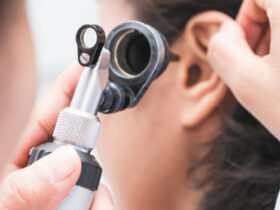By Daniel Sellers, MSCS, PA-C
Background
The nervous system is divided into two main parts, the central nervous system (CNS), which includes the brain, brainstem and spinal cord, and the peripheral nervous system (PNS), which includes the nerves outside of the brain and spinal cord. Today, we are discussing the nerves which originate in the spinal cord, like roots from the trunk of a tree, and travel throughout the body, sending sensory and motor information bidirectionally.
Neuropathy is a general term used to describe nerve dysfunction that most commonly begins in the legs and progresses upward in a stocking-glove fashion. Other names for neuropathy are “polyneuropathy” and “peripheral neuropathy.”
The most common type of neuropathy is distal symmetric polyneuropathy, which simply means nerve dysfunction beginning at the ends of the nerves, that gradually progresses upward, predominantly involving sensation on both sides of the body. As the condition progresses upward toward the knees, it typically begins to affect the fingertips and hands. Symptoms of neuropathy may be described differently depending on the affected person. While one person has painless numbness and balance difficulties, another may feel significant burning or tingling.
Because the nerve signals from the feet are diminished, balance tends to deteriorate over time. When this occurs, fall precautions are important including motion-sensored night lights, grab bars, especially in the bathroom, and removal of throw rugs which create a trip hazard. An assistive device such as a cane can be helpful as well.
Diagnosis
A neurologic exam suggests neuropathy when a patient’s reflexes are diminished or absent, and a patient is unable to feel pain, temperature or vibratory sensation in the extremities. At this point, electromyography and nerve conduction studies (EMG/NCS) will likely be performed to identify the type and measure the severity of neuropathy. EMG/NCS is an electrical test measuring the speed at which nerve signals travel. Based on the results, a blood test will typically be ordered to evaluate for common causes of neuropathy.
Causes
Nerves are vulnerable to toxins (such as sugar and alcohol), inflammation (autoimmunity), infections (such as HIV and Lyme disease), vitamin deficiencies (such as B12) and metabolic abnormalities (such as hypothyroidism). Neuropathy can also be ‘“idiopathic” which means the symptoms are present, with no identified cause.
Examples of Identifiable Causes
Sugar – Diabetes (elevated blood sugar) is one of the most common causes of neuropathy; And, neuropathy is the most common complication of diabetes. The duration and severity of blood sugar elevation are the main risk factors for diabetic neuropathy. Strict blood sugar control is the key. Not only does it reduce the risk of getting diabetic neuropathy, it improves, and prevents worsening of nerve function in people who already have symptoms of diabetic neuropathy.
Alcohol – Neuropathy is just one of the many neurologic consequences of alcohol abuse. Mort than one third of alcoholics have peripheral neuropathy. Abstinence from alcohol has been shown to reduce symptoms, but the longer the duration and the more severe the symptoms, the lower the chances of recovery.
Vitamin B12 Deficiency – A deficiency of vitamin B12 most commonly causes symptoms of peripheral neuropathy, although other neurologic symptoms are possible as well, including forgetfulness, vision changes, depression, imbalance and restless legs. Neurologic symptoms can occur with blood levels less than 400. It should be noted that some labs will not flag the result as abnormal unless the level is below 200. A deficiency of vitamin B12 is not typically due to lack of B12 in the diet, but rather the lack of an enzyme (intrinsic factor) that breaks down B12 in order for it to be absorbed by the body. This condition is known as pernicious anemia. In this case, B12 taken by mouth is ineffective, which is why either sublingual (under the tongue) supplementation or injections are recommended. While it is not dangerous to have high levels of B12, too much of a good thing is not always good. For example, excessive intake of B6 is toxic to nerves, and can lead to neuropathy just as a deficiency of B12. When purchasing supplements, it is important to review the column to the far right that is
labeled RDI (recommended daily intake) or RDA (recommended dietary allowance) which will be represented as a percent, and unless your healthcare provider approves otherwise, stick with 100% or less.
Chronic Inflammatory Demyelinating Polyneuropathy (CIDP) – CIDP is a rare type of neuropathy affecting 1-9 per 100,000 people in the world. It occurs in males more than females, and in older people more than younger. The exact cause is unknown, but evidence suggests it is an immune-
mediated neuropathy in which the immune system attacks and degrades the sheath surrounding the nerve, which functions as the highway of the nervous system. Neuropathy symptoms begin insidiously and peak at eight or more weeks from onset. Weakness typically occurs in shoulders, hips, hands and feet. Numbness, tingling and pain usually begin in the feet before the hands. EMG/NCS testing and spinal fluid analysis help to confirm a suspected diagnosis. Treatment with steroids, IV immunoglobulin or plasma exchange may be recommended.
Treatment Options
For most types of neuropathy, when pain is present, medications such as gabapentin, pregabalin, duloxetine and amitriptyline can be helpful for symptomatic relief. However, these medications do not typically have an impact on painless numbness. Excluding IVIG, at this time there are no FDA-approved medications or procedures that reverse nerve damage. The most important thing is to seek medical attention when symptoms begin, rather than waiting. If an underlying cause of neuropathy is identified, treatment can be initiated before irreversible nerve damage takes place.
Daniel Sellers, MSCS, PA-C
Donald Negroski, MD
Valeriy Sabodash, MD
Negroski Neurology
(941) 487-2160
5741 Bee Ridge Road, Suite 530
Sarasota, FL 34233
Located in the Sarasota Medical Centre next to Doctors Hospital of Sarasota (Corner of Bee Ridge Road and Cattlemen off of Maxfield Drive)










